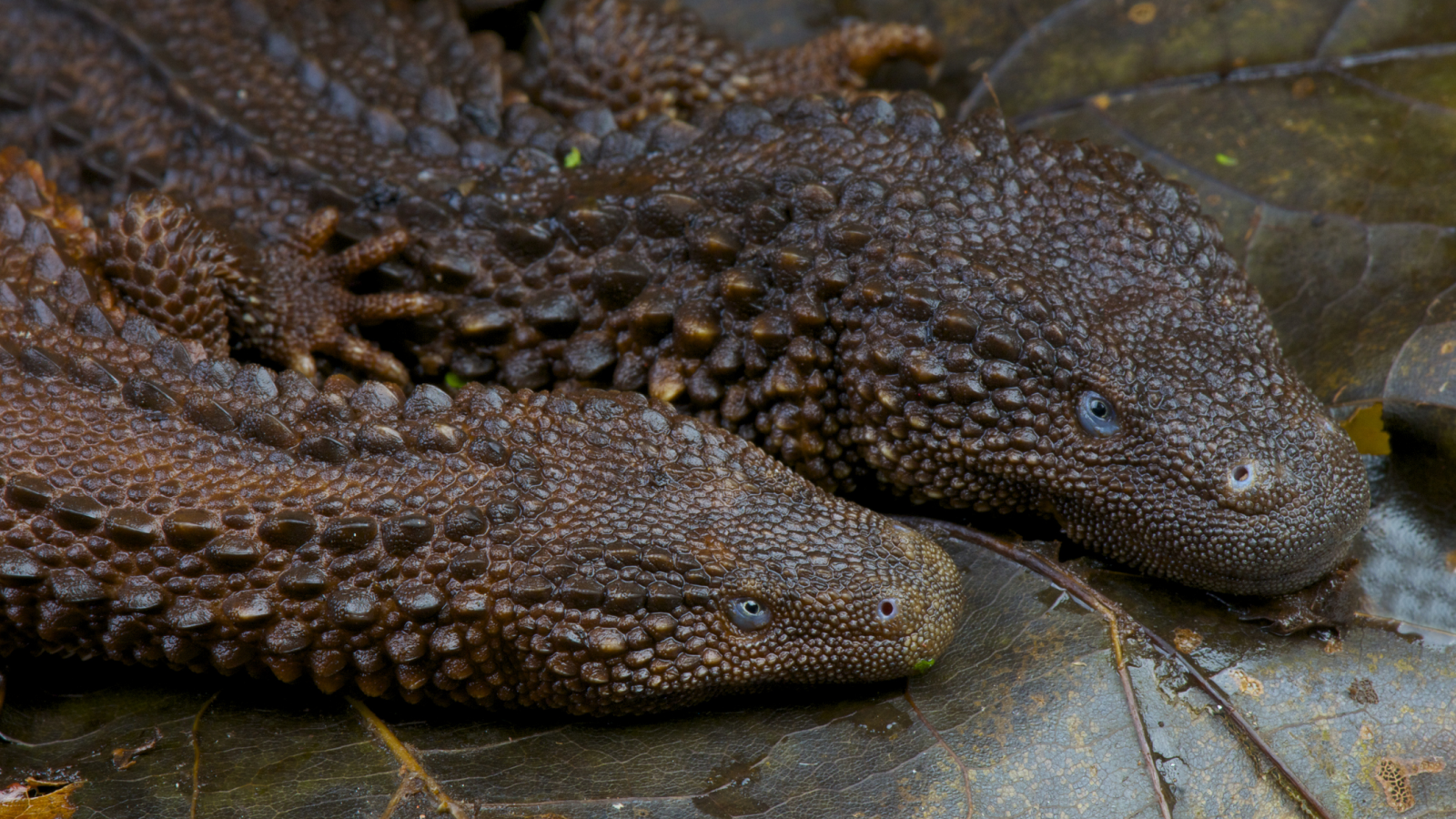Earless monitor lizards: The 'Holy Grail' of reptiles that looks like a mini dragon
Researchers are only beginning to understand the cryptic lives of the earless monitor lizards of Borneo.

Name: Earless monitor lizard (Lanthanotus borneensis)
Where it lives: Borneo, near streams in lowland rainforests
What it eats: Earthworms, crabs and fish
Why it's awesome: Earless monitor lizards are dragon-like reptiles that are so rare they're dubbed the "Holy Grail" of herpetology — the study of reptiles and amphibians.
The species is the only known member of its family, Lanthanotidae, which means researchers haven't found anything else quite like them alive today. The most recent common ancestor of this lizard is thought to have diverged in the Cretaceous period (145 million to 66 million years ago).
Earless monitor lizards grow up to 1.6 feet (50 centimeters) long, with slender bodies, tiny limbs and tails they can grasp things with. Their heads lack external ears, hence the earless monitor lizard moniker, and their lower eyelids — which they close when underwater — are translucent.
Scientists still don't know much about these mysterious lizards, but they believe the animals' adaptations suit a subterranean lifestyle, according to a 2014 report by TRAFFIC, a wildlife organization focused on the trade in wild species.
Get the world’s most fascinating discoveries delivered straight to your inbox.
Earless monitor lizards spend their days burrowing underneath vegetation and rocks on the banks of rocky streams, coming out at night to find food on land and in the water, according to a 2013 article published in Herpetological Review. Dirt sticks to their lumpy scales, so when they do come out, they have camouflage.
It is thought they use their tails as an anchor, wrapping them around stones and roots to avoid being swept away in floods. They mate in water, with sessions lasting for hours.
According to Animal Diversity Web, earless monitor lizards' unusual appearance led scientists to think they were a missing link between snakes and lizards, but this was later refuted.
They are endemic to Borneo, where they are threatened by a combination of deforestation and the pet trade, according to the IUCN Red List of Threatened Species.

Patrick Pester is the trending news writer at Live Science. His work has appeared on other science websites, such as BBC Science Focus and Scientific American. Patrick retrained as a journalist after spending his early career working in zoos and wildlife conservation. He was awarded the Master's Excellence Scholarship to study at Cardiff University where he completed a master's degree in international journalism. He also has a second master's degree in biodiversity, evolution and conservation in action from Middlesex University London. When he isn't writing news, Patrick investigates the sale of human remains.


